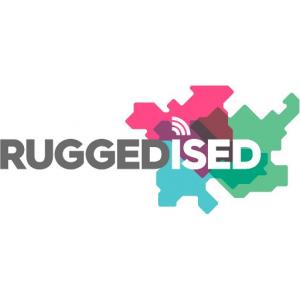
Details
Description
The European lighthouse cities Rotterdam, Glasgow and Umeå and 3 follower cities, Brno (Czech Republic), Gdansk (Poland) and Parma (Italy) come together to combine ICT, e-mobility and energy solutions to create sustainable urban spaces. Such actions could bring profound economic, social and environmental impacts for the cities, resulting in a better quality of life (including health and social cohesion), competitiveness, jobs and growth
RUGGEDISED strives to:
- Improving the quality of life of the citizens, by offering the citizens a clean, safe, attractive, inclusive and affordable living environment.
- Reducing the environmental impacts of activities, by achieving a significant reduction of CO2 emissions, a major increase in the investment and usage of RES and an increase in the deployment of electric vehicles.
- Creating a stimulating environment for sustainable economic development, by generating more sustainable jobs, stimulating community involvement in smart solutions and to boost start-up and existing companies to exploit the opportunities of the green digital economy and Internet of Things.
To achieve the aims, a key innovation challenge in all three lighthouse cities of RUGGEDISED is to arrange successful combinations of integrated smart solutions for energy and e-mobility (enabled by ICT platforms and open data protocols) and business models with the right incentives for stakeholders to invest and participate in a smart society. Specific challenges relevant for the lighthouse cities are:
- to manage peak load variation in thermal and electrical energy supply and demand;
- to develop appropriate cooperation structures and business models for exchange of energy;
- to develop Smart City (open) data platforms and energy management systems
Three lighthouse project aim to provide their citizens with:
- CO2 emission reduction, the total expected savings for the cumulative 182,000 m2 of buildings is 3.7 Mton CO2 per year
- Renewable energy system increase 4670 MWh and CO2 reduction of 3840 tCO2/year
- Reduce transport based CO2 emissions, on the basis of CO2 intensity of the European electricity grid of 540 g CO2/kWh
- More than 1900 new jobs
Map
Project demonstration sites
RUGGEDISED Umeå
City
RUGGEDISED Rotterdam
City
RUGGEDISED Glasgow
City
Related topics
Building aspects
- Building Energy Services
- cooling (only)
- Building Energy Services
- heating and cooling
- Building Energy Services
- heating and cooling and DHW
- Building Energy Services
- heating and DHW
- Building Energy Services
- lighting and appliances
- Installed Renewable Energy Sources
- photovoltaic
- Technology used to supply the buildings
- district heating (DH) network
- Technology used to supply the buildings
- electrical equipment
- Technology used to supply the buildings
- heat pump: compression
- Technology used to supply the buildings
- heat pump: reversible
Energy Carriers
- Heat/district heat
- Solar thermal energy
- Waste heat
Energy Systems Types
- Storage
- Electrical Storage
- Sustainable Generation
- Waste heat
Mobility Type of Intervention
- Infrastructure
Thematic Field
- Energy System(s) Integration
- Information and Communication Technologies
- Mobility and Transport
- New Building(s)
- Refurbished Building(s)
